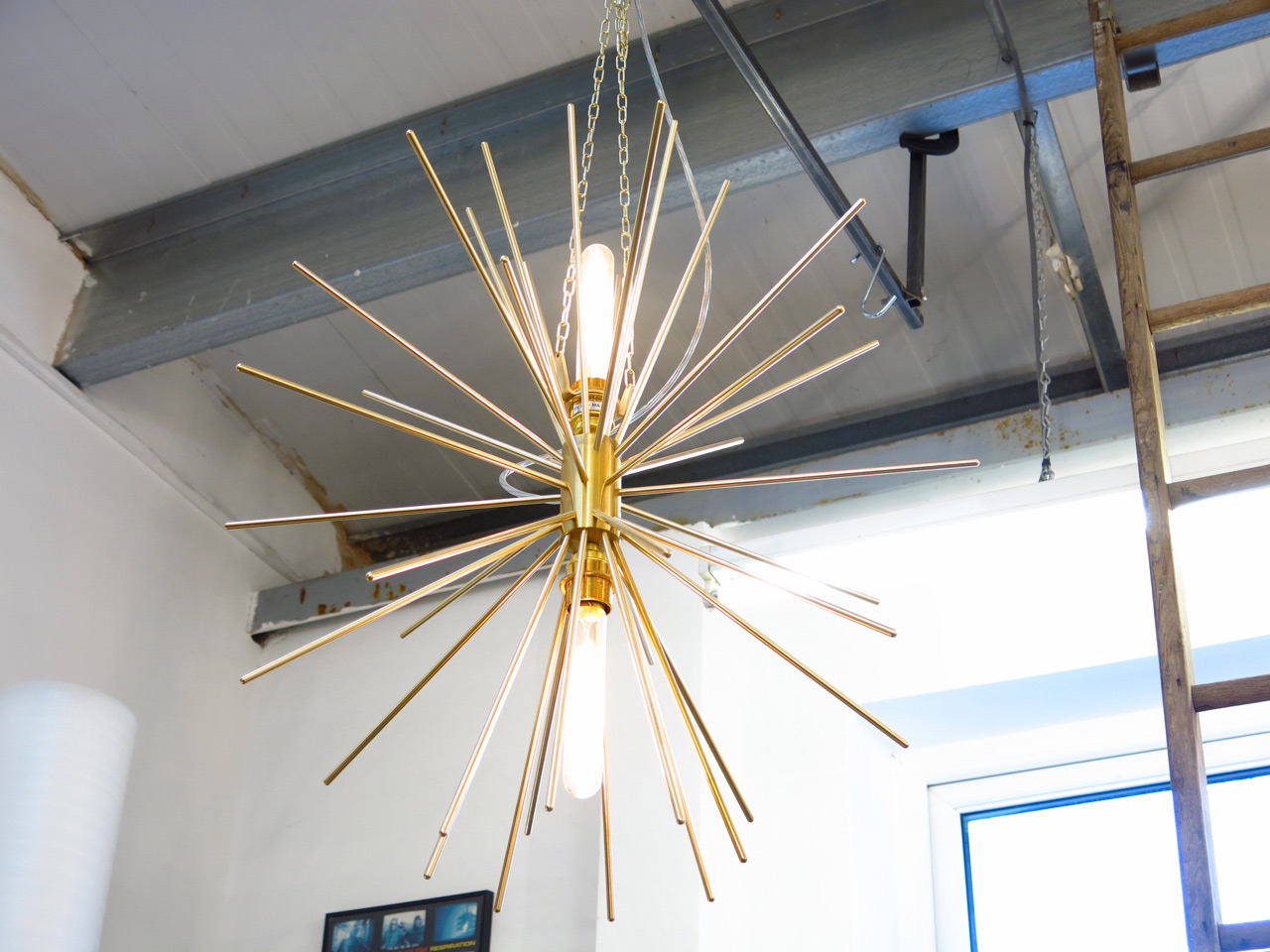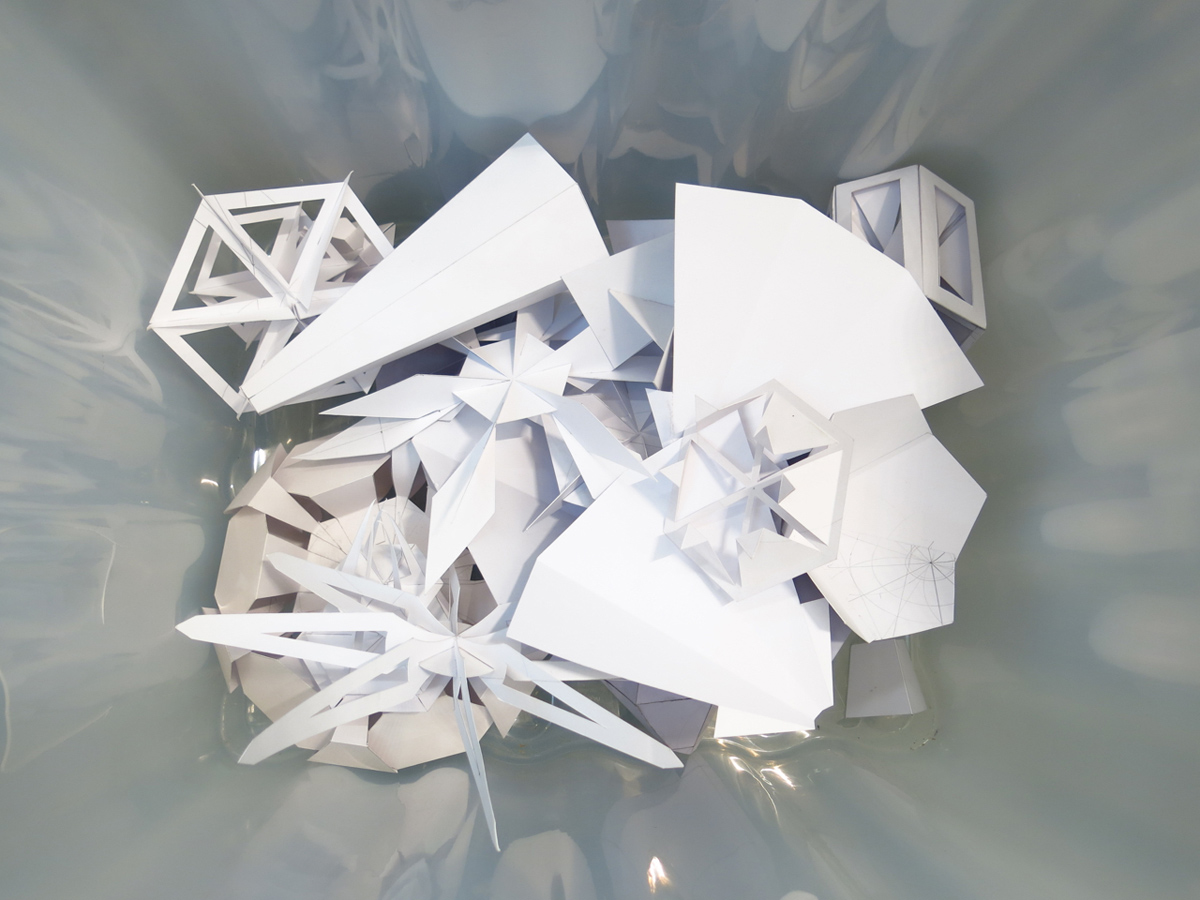Studio Visit: Charles Lethaby Lighting
Imaginative forms come to life in east London

British lighting designer Charles Lethaby’s cozy, high-ceilinged studio is located in Walthamstow. The east London area has become something of a creative hotspot, with plenty of emerging brands setting up shops or studios here. Lethaby is one of around 40 creatives sharing spaces in Blackhorse Workshop, a community-focused building in the neighborhood with a hands-on attitude toward creativity. It’s here that he designs his beautiful geometric lights, including the “Elara” that’s reminiscent of a snowflake or bursting star. The Elara currently has pride of place in 100 Hobbs clothing stores throughout Britain, where it has been part of their Christmas display—Lethaby’s first big order since he set up his company, Charles Lethaby Lighting, in August 2014.

After graduating from iconic design school Central Saint Martins, then teaching product design and 3D design at schools in central London for nine years, Lethaby decided the time had come to fulfill his dream of having his own company. “I’d been thinking about it for a long time, and I’d saved up for a deposit to buy a house with my girlfriend. It was a case of either buying the house, or putting the money into my own business. My girlfriend was very supportive and said I needed to follow my dreams—so I just dived in,” he tells CH. When showing at the trade show 100% Design, as part of London Design Festival earlier this year, Lethaby attracted the attention of Hobbs. That led to an order for 100 lights and 250 of his Elara sculptures (which have the same design as the light, but don’t feature a lightbulb). As all the lamps are assembled in the studio in London, it was a “really tight turnaround,” the designer says—and the beginning of the steep learning curve that creatives who enter the world of commerce usually face.

The Elara lights have now been taken on by department store Heals, which will also sell Lethaby’s Aurora lamp. The quirky lamp consists of an oversized filament bulb seemingly resting on eight solid brass legs, giving the light the appearance of an octopus or jellyfish. Like the Elara, and many of Lethaby’s other designs, the Aurora has a slightly retro look that is reminiscent of designs from the ’60s. “A lot of people have said that to me, and to be honest I think some of the best design came out of the 1960s and 1970s, but it’s not something I think about when I create them. The Aurora does have a kind of timeless quality to it; you don’t necessarily know when that would have been designed. I think the best design should stand the test of time,” Lethaby says.

Both lamps are made using a five-axis CNC, using the idea of screwing things together as the basis. They’re delivered in luxury black tubes and the arms and legs are screwed into the body to assemble. The range is under continuous development. “I’ll release three to four more products that use the locking-together kind of assembly, and a couple of them will be more accessible, price-wise,” Lethaby says. For example, the Aurora (£320) is currently only made in solid brass, but will become available in less pricey materials in the future. With their deceptively simple yet eye-catching designs, the Elara and Aurora lamps are the result of Lethaby’s passion for art and sculpture, two subjects he once also taught. “I guess when I started out, my ambition was to make everything by hand, so what was achievable in the workshop was a constraint on the kind of forms that I could make,” he says. His upcoming designs follow the same theme. “All my designs have that kind of geometry within them and I’m also going back to the idea of sculpture, the use of repetition, which features quite heavily in my work.”

Though his plan is to have “ten lighting pieces that are really successful” before diversifying, Lethaby aims to expand into furniture, and potentially also exteriors, in the future. He explains: “I think the designer I probably admire the most is Lee Broom. The way he’s marketed himself and his brand image is so strong, and that’s definitely someone I really look up to and want to try to learn from. That’s another reason why I want to focus on the lighting design, because I really want to push it as much as I can before I do anything else.” Despite the company growing quickly, Lethaby’s products are all still assembled and packaged in the studio in Walthamstow, and he plans to keep it that way. “I think it’s important for it to be assembled here to ensure quality. I have to quality-check things. I oversee everything that goes out, and I make sure it works.”
Hero image courtesy of Charles Lethaby, all other images by Cajsa Carlson












